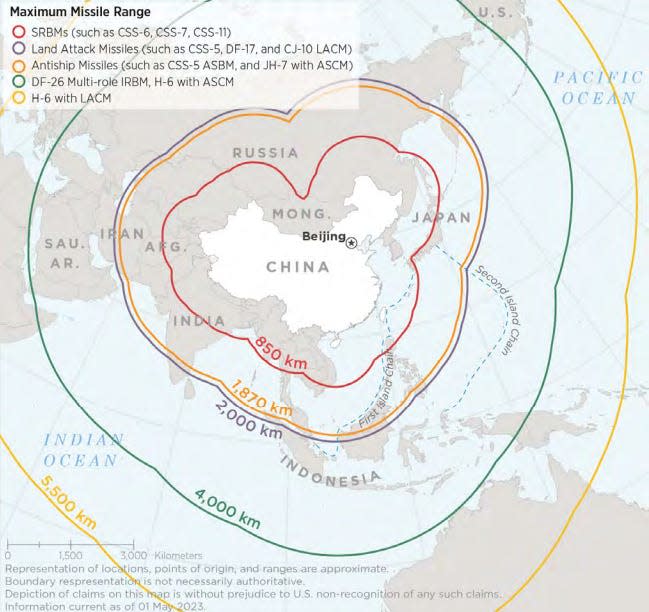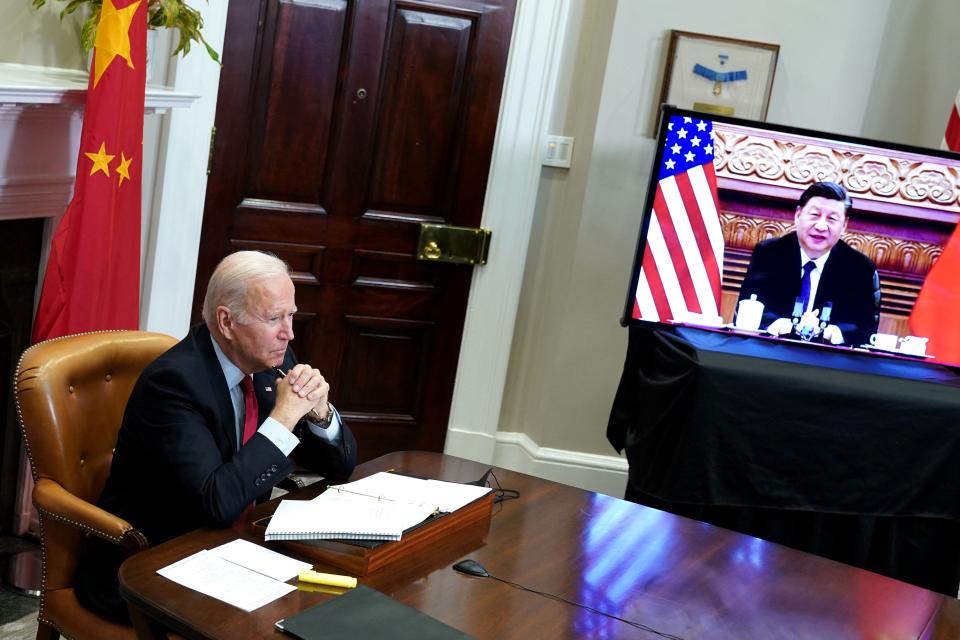China roughly doubled the number of missiles it could use to go after US bases in Japan, new Pentagon report shows
The US Department of Defense released its annual China Military Power Report last week.
The report says China's has increased in missile stockpiles, doubling its supply of the DF-21 missile.
The increase in what an expert called "Japan Killers" gives China greater capability to threaten US bases.
China has continued to build up its already menacing rocket force and nearly doubled the number of one particular missile it could use to target and pummel US bases in Japan should a conflict break out.
The People's Liberation Army Rocket Force's includes a significant increase in DF-21 medium-range ballistic missiles. The Pentagon estimates China had 1,000 of these missiles by the end of 2022. That's a dramatic increase, almost doubling the 500+ estimate in 2021.
The new figures were released last week in the Department of Defense's annual China Military Power Report. The latest congressionally-mandated, unclassified update explores the military prowess of the People's Republic of China in 2022, highlighting, among other things, the PLARF's ongoing efforts to enhance its missile capabilities as part of "its strategy to deter and counter third-party intervention in regional conflicts," such as keeping the US and its allies out of a fight over Taiwan.

The DF-21, which NATO refers to as CSS-5, has an estimated range of 1,000-3,000 kilometers — which is not far enough to reach US forces stationed in Guam like the intermediate-range DF-26 but too far to make sense for strikes on Taiwan, for which short-range missiles like the DF-11, DF-15, and DF-16 are better suited.
But as Tom Shugart, a former US Navy submarine commander who's now an adjust senior fellow at the Center for a New American Security (CNAS) think tank, wrote Monday on X, the DF-21s, or "Japan Killers" as he calls these weapons, are able to hit anywhere in Japan.
—Tom Shugart (@tshugart3) October 23, 2023
The ability to strike positions in Japan could spell major trouble for US bases — fixed, immovable targets — in the country and weaken their ability to deter potential geopolitical conflict, especially as tensions flare and China throws its weight around.

The DF-21 is a road-mobile, solid-fuel, single-warhead missile first used by China in the early 1990s. Since then, China has created multiple variants. Some are nuclear while others are conventional, and some are land-attack systems while others serve in an anti-ship role.
The anti-ship variant, sometimes called a "carrier killer" like the DF-26, could keep US Navy aircraft carrier strike groups away from Taiwan and limit their ability to quickly intervene if China were to invade the island, although there is some skepticism on whether the missile could single-handedly destroy a carrier and how it would actually interact with a moving target.
The PLARF's stockpile of 1,000 MRBMs likely includes both land-attack and anti-ship variants of the DF-21, as well as limited numbers of the hypersonic DF-17. That number nearly doubling from 2021 indicates a build-up in weapons that could hit US forces in the area, specifically key American bases and operations centers.

But that's been a priority for China for years now. In 2017, RAND assessed that the key US facilities specifically in Japan could already be within range of thousands of accurate Chinese ballistic and cruise missiles that could be hard to counter.
"In 1996, the PLA was just beginning to develop conventionally armed ballistic missiles and had only a few dozen relatively inaccurate conventionally armed short-range missiles that could reach targets in Taiwan or Korea, but not US bases in Japan," the RAND report said. "By 2015, however, the PLA's Second Artillery had deployed more than 1,200 conventionally armed ballistic missiles, including the DF-21C with the range to attack targets throughout Japan."
And China has also prioritized accuracy in addition to numbers. As Shugart wrote in 2017, "by marrying great accuracy with numerous ballistic missiles, China may have developed a capability that the Soviet armed forces never had: the ability to strike effectively, in a matter of minutes, US and allied bases, logistical facilities, and command centers without resorting to the use of nuclear weapons, and without having established air superiority."

The bolstering of China's stockpile of missiles capable of hitting US targets across Japan is likely both a flex of military might and a deterrent against American forces in the region, and it also comes at a near-frigid point in PRC and US relations.
"In 2022, the PLA largely denied, cancelled, and ignored recurring bilateral engagements and DoD requests for communication," the Pentagon included in their report. "The PLA's refusal to engage with DoD has largely continued in 2023" and, along with its "increasingly coercive and risky operational behavior," there is significant concern "of an operational incident or miscalculation spiraling into crisis or conflict."
Read the original article on Business Insider

 Yahoo News
Yahoo News 
